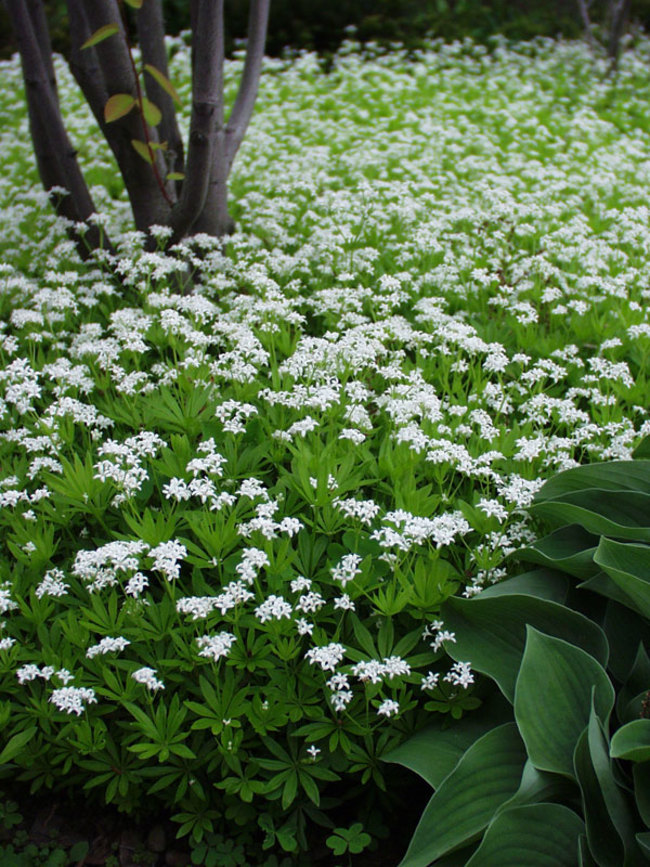Ground covering plants are useful for those who have to deal with the effects of erosion or have slopes and hillsides in their backyard. They can also be used as substitutes for the grasses that make up water thirsty green lawns. An added bonus with some types of ground coverings is that they can produce colourful flowers as well. If this sounds like something that might work well in your situation, we’ve put together a list of four flowering ground cover choices.
Hosta (Hosta sp.)
The various Hosta species might be more commonly known for their attractively bordered leaves, but they can also be used as a ground cover that produces flowers. Hostas are easy to grow, work well in shady areas and provide a wide range of colour options. This makes them very accommodating when trying to balance a colour scheme. White or purple flowers bloom on long stalks in spring and summer to provide accent to the lush foliage.
Sweet Woodruff (Galium odoratum)
Sweet woodruff is another commonly used ground cover that thrives in shady areas. It’s highly adaptable to a variety of soil conditions and quickly spreads. It grows to about eight inches tall and features clusters of white flowers. If necessary, it’s possible to control its growth using a lawnmower. The leaves actually provide a pleasant fragrance that has been used in perfumes.
Bearberry (Arctostaphylos uva-ursi)
Bearberry is native to Canada and makes for an excellent perennial ground cover. Small pink or white flowers begin to appear in April or May and are eventually replaced with red berries that will last throughout the winter. Bearberry is very low maintenance and won’t require regular pruning or cutting back.
Common Periwinkle (Vinca minor)
Common Periwinkle is an aggressive evergreen grower which makes it useful as a flowering ground cover. It has broad, attractive leaves and blue, purple or white flowers that blossom in the spring. It reaches a maximum height of about six inches and works well to keep out weeds. Periwinkle is often used around the bases of trees where green grass has difficulty growing. It’s low maintenance and won’t attract bothersome insects or pests.



